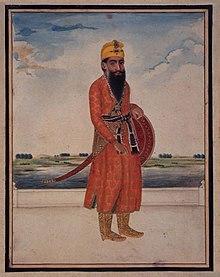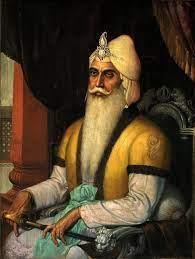CNC Aluminum Parts
Custom Metal Processing Service 3/4/5 Axis Precision Aluminum brass stainless steel Cnc Milling Machining Parts
CNC Aluminum Parts refer to the machined parts made of aluminum alloy using Computer Numerical Control (CNC) machines. CNC machines are automated machines controlled by a computerized system that can produce precise and accurate parts with tight tolerances.
Aluminum is an ideal material for CNC machining due to its excellent strength-to-weight ratio, corrosion resistance, and good machinability. CNC Aluminum Parts are commonly used in various industries, including aerospace, automotive, electronics, medical, and industrial equipment.
Some examples of CNC Aluminum Parts are:
1. CNC machined aluminum enclosures and housings for electronic devices
2. CNC machined aluminum brackets and mounts for automotive and industrial applications
3. CNC machined aluminum heat sinks for electronic devices and LED lights
4. CNC machined aluminum frames for UAVs and drones
5. CNC machined aluminum wheels and rims for the automotive industry.
Specification:
MaterialAluminum , Copper , Brass ,Stainless steel, ABS, POM, PP, PU, PC, PA66, PMMA, PVC, PVE and others as per requirements
Process range1. Metal and Plastic Rapid Prototype
2. CNC Machining Parts: Turning, Milling, Stamping, Bending, Welding, Tapping, Riveting, Gear cutting, Wire-cutting, etc.
3. Customized Aluminum casting
4. SLA & SLS 3D Printing
5. Industrial design, 2D & 3D drawings design
6. Reverse engineering
7. Silicone mold, Injection mold, Vacuum casting
8. Tooling and Fixture Designing and Processiing
Surface Treatment/FinishAnodize, Chromate, Electrolytic Plating, Nickel Plating, Galvanize, Tempered, Paint, Powder Coating, Polish etc.
Heat treatment capabilityAnnealing, Normalizing , Nitriding, Tempering , Carbonitriding
ApplicationAutomotive, Automation, Test systems, Sensors, Medical, Sports, Consumer, Home appliance,Electronic, Pumps, Computers, Power and energy, Architecture, Printing, Food, Textile machinery, Optical, Lighting, Security and safety, AOI,SMT equipment, etc.
InspectionIn-house or third party, all the products are strictly inspected by skilled QC
Service TypeOEM & ODM
Product Display:
Certificate锛?/strong>
Why Choose us?
Package & Delivery:
FAQ:
Q: Who we are?
A: We are based in Guangdong, China, start from 2010,sell to North America(42.00%),Western Europe(25.00%),Southeast Asia(7.00%),Oceania(7.00%),South America(6.00%),Domestic Market(5.00%),Eastern Europe(3.00%),Northern Europe(3.00%),Africa(2.00%). There are total about 51-100 people in our office.
Q. What finishes can you provide?
A: powder coating, polishing, zinc/nickel /chrome plating, anodized and so on.
Q. How can we guarantee quality?
A. Always a pre-production sample before mass production;
Always final Inspection before shipment;
Q. Is small quantity available?
A: Yes, small quantity for trial order is available.
Please feel free to contact us if you have any question or ideas, we are here for you all the time!CNC Lathe Precision Parts manufacturers
website:
http://www.o-met.cn/molded-precision-components/cnc-lathe-precision-parts/CNC Aluminum Parts
Custom Metal Processing Service 3/4/5 Axis Precision Aluminum brass stainless steel Cnc Milling Machining Parts
CNC Aluminum Parts refer to the machined parts made of aluminum alloy using Computer Numerical Control (CNC) machines. CNC machines are automated machines controlled by a computerized system that can produce precise and accurate parts with tight tolerances.
Aluminum is an ideal material for CNC machining due to its excellent strength-to-weight ratio, corrosion resistance, and good machinability. CNC Aluminum Parts are commonly used in various industries, including aerospace, automotive, electronics, medical, and industrial equipment.
Some examples of CNC Aluminum Parts are:
1. CNC machined aluminum enclosures and housings for electronic devices
2. CNC machined aluminum brackets and mounts for automotive and industrial applications
3. CNC machined aluminum heat sinks for electronic devices and LED lights
4. CNC machined aluminum frames for UAVs and drones
5. CNC machined aluminum wheels and rims for the automotive industry.
Specification:
MaterialAluminum , Copper , Brass ,Stainless steel, ABS, POM, PP, PU, PC, PA66, PMMA, PVC, PVE and others as per requirements
Process range1. Metal and Plastic Rapid Prototype
2. CNC Machining Parts: Turning, Milling, Stamping, Bending, Welding, Tapping, Riveting, Gear cutting, Wire-cutting, etc.
3. Customized Aluminum casting
4. SLA & SLS 3D Printing
5. Industrial design, 2D & 3D drawings design
6. Reverse engineering
7. Silicone mold, Injection mold, Vacuum casting
8. Tooling and Fixture Designing and Processiing
Surface Treatment/FinishAnodize, Chromate, Electrolytic Plating, Nickel Plating, Galvanize, Tempered, Paint, Powder Coating, Polish etc.
Heat treatment capabilityAnnealing, Normalizing , Nitriding, Tempering , Carbonitriding
ApplicationAutomotive, Automation, Test systems, Sensors, Medical, Sports, Consumer, Home appliance,Electronic, Pumps, Computers, Power and energy, Architecture, Printing, Food, Textile machinery, Optical, Lighting, Security and safety, AOI,SMT equipment, etc.
InspectionIn-house or third party, all the products are strictly inspected by skilled QC
Service TypeOEM & ODM
Product Display:
Certificate锛?/strong>
Why Choose us?
Package & Delivery:
FAQ:
Q: Who we are?
A: We are based in Guangdong, China, start from 2010,sell to North America(42.00%),Western Europe(25.00%),Southeast Asia(7.00%),Oceania(7.00%),South America(6.00%),Domestic Market(5.00%),Eastern Europe(3.00%),Northern Europe(3.00%),Africa(2.00%). There are total about 51-100 people in our office.
Q. What finishes can you provide?
A: powder coating, polishing, zinc/nickel /chrome plating, anodized and so on.
Q. How can we guarantee quality?
A. Always a pre-production sample before mass production;
Always final Inspection before shipment;
Q. Is small quantity available?
A: Yes, small quantity for trial order is available.
Please feel free to contact us if you have any question or ideas, we are here for you all the time!CNC Lathe Precision Parts manufacturers
website:http://www.o-met.cn/molded-precision-components/cnc-lathe-precision-parts/












